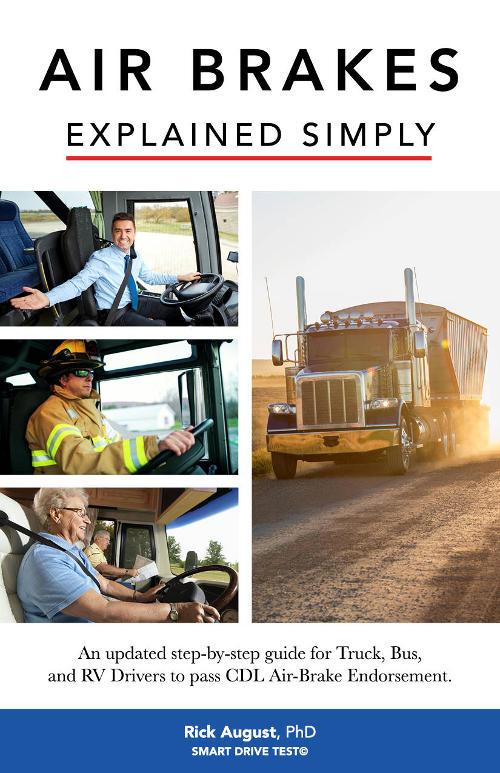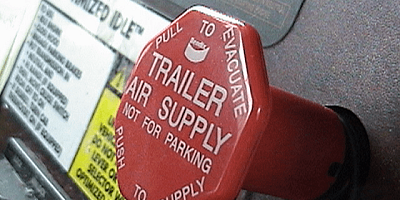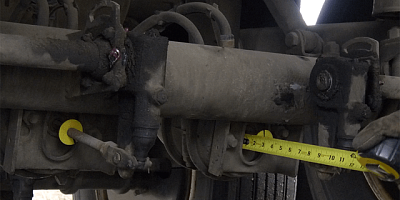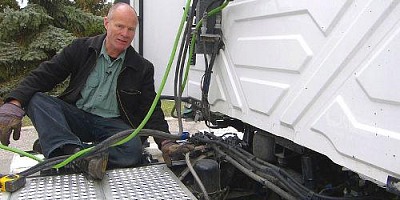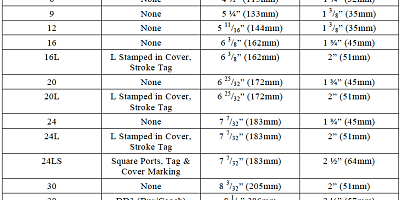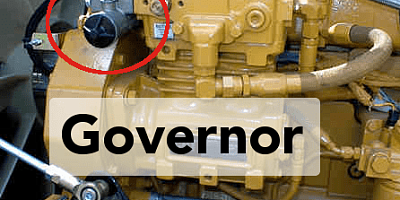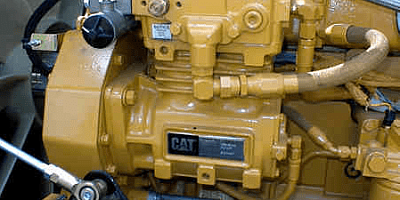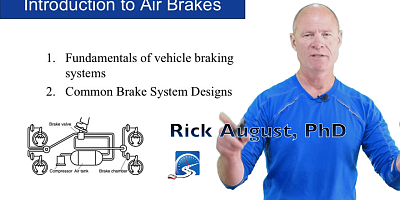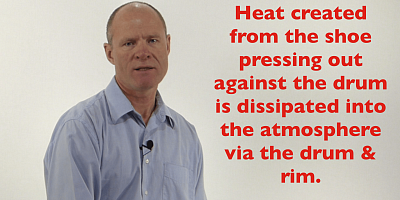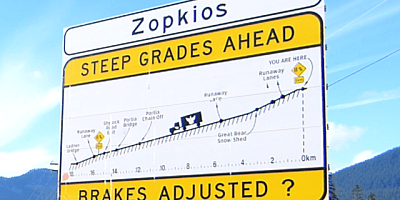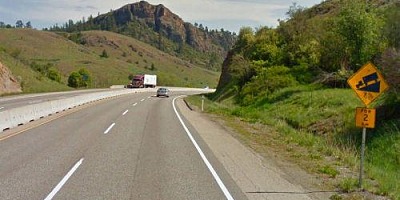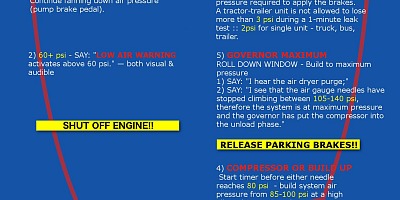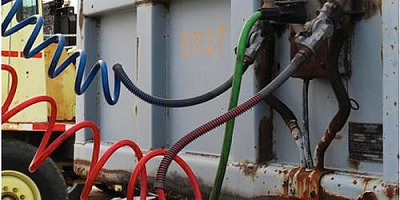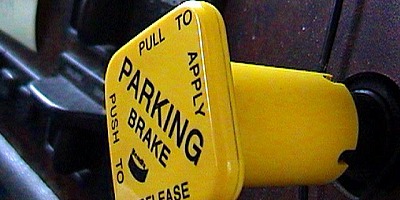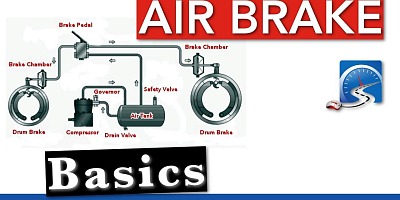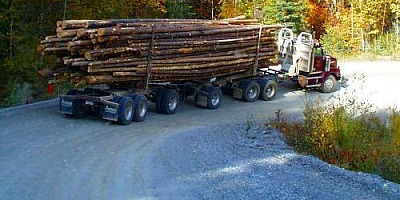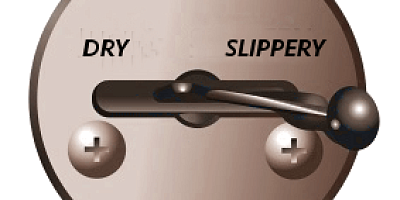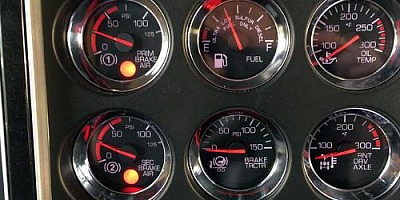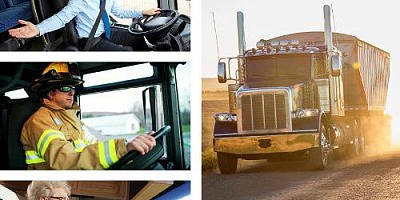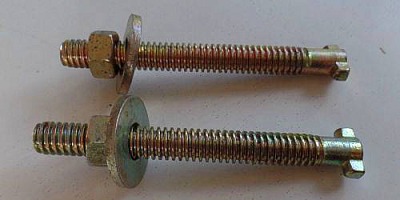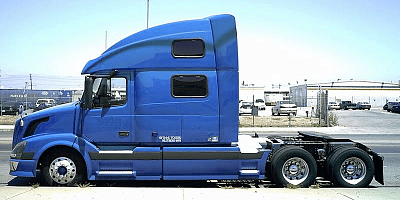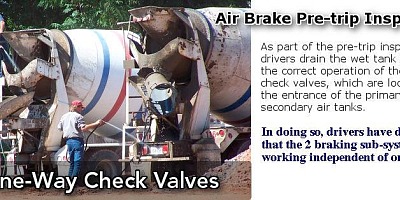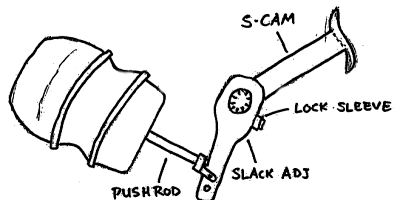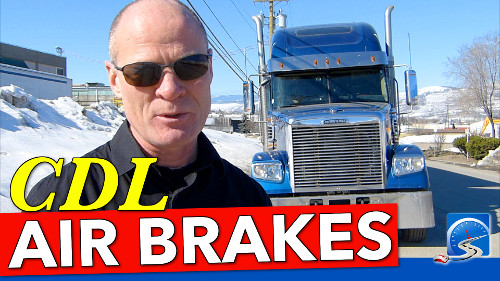The brakes on your car are the same as air brakes, only the power source is different
Air Brakes Explained Simply :: Service, Parking and Emergency Brakes One & the Same
Service, Parking and Emergency Brakes Are One & the Same; it's one tool with three functions.
Introduction
Hi there smart drivers Rick with Smart Drive Test talking to you today about the very fundamentals of air brake systems.
And the very basic information that you should come out of an air brake course with.
One of the things that I've always struggled with in terms of air brakes is trying to explain to students that there are two power sources in an air brake system.
An air brake system works exactly the same as the brakes on your car or light truck.
The brakes on your car or light truck are hydraulic brakes.
So in other words, it's hydraulic pressure--fluid--that activates the brakes.
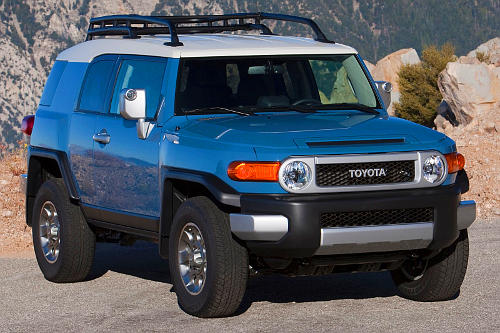
There's also a parking brake, and there's also an emergency brake on your vehicle.
Now braking systems, air brake systems and hydraulic systems are named after their power source.
The power source that applies the service brakes.
The service brakes are the foot pedal that you use to apply the brakes going up and down the road.
And I've always struggled with that because in an air brake systems they confuse students because they have something on air brake systems that are called spring brakes.
And it leads students, I believe, to think that there is a different braking apparatus on the air brake system.
And if you agree with what I'm saying here--that you believe that spring brakes are something else other than air brakes on an air brake system leave a comment down in the comment section there and let me know that yes I was confused by those being called air brakes and spring brakes.
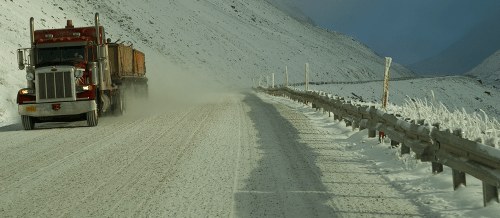
Because what I'm going to try and do in this video is to unravel that mystery for you and explain the very fundamentals of what you need to know in an air brake system when you leave an air brake course to earn your CDL license or truck or bus license.
So stick around, we'll be right back with that information.
[INTRODUCTION & MUSIC] Hi there Smart Drivers.
Welcome back, Rick with Smart Drive Test, talking to you about: The very basic information that you need to know when you come out of an air brake course.
Alright, when we drive our passenger vehicle, there are three brake types on your vehicle.
Service Brake - the Brake Pedal
You have a service brake, which is the foot pedal, when you go up and down the road, you apply the foot pedal, and the vehicle comes to a nice gentle stop...

Most of the time, 99.9% of the time.
All systems are divided into two independent subsystems, so it's unlikely that braking systems, regardless whether it's a hydraulic braking system or an air brake system, are going to fail.
So, service brakes is the foot pedal.
Parking Brake
The next brake that you have on your vehicle is the parking brake.
And, I know here, in North America, 85% of us drive automatic transmissions, and 85% of people who drive automatic transmissions, 90% of those people never use the parking brake.
But, there is a parking brake on your vehicle, and I would strongly suggest that you apply it before you put the vehicle into park, because it's hard on your transmission when you don't apply the parking brake.
Now, if the service brakes fail, the foot pedal fails, and you don't have brakes going up and down the road, you can pull the parking brake on, using the power from your body, and the lever is attached to a cable to the brakes on the back, and bring the vehicle to a stop.
Emergency Brake
Now, you're using the parking brake as an emergency brake.
So, the three systems on your passenger vehicle are: Service brakes, the foot pedal.

The parking brakes, which the energy comes out of you, as you pull up on the ratchet mechanism, or push the ratchet pedal down on the floor.
And if the service brakes fail, you can use the parking brake to bring the vehicle to a stop, and thus the "parking brakes" become the "emergency brake".
Now, they're called hydraulic brakes, because that's the power source for the service brakes.
Air brakes work exactly the same.
And what confuses students on air brake systems, is that we have something on air brake systems that has been referred to, for almost 40 years now, called spring brakes.
Springs Are The Power Source That Applies the Brakes
Spring brakes only serves to confuse students, and if this has confused you, then leave a comment, down in the comment section, and tell me that I'm on the right track.
Because as I said, I'm writing a book, a manual, called "Air Brakes Simplified", which is trying to simplify the system, and explain air brakes to you better.
All that spring breaks are is another power source on an air brake system.
On an air brake system we have service brakes, which is the foot pedal, and it applies the brakes on the vehicle using air pressure.
Thus, they're called air brakes, like hydraulic brakes are called hydraulic brakes on your car or light truck, because they're powered by hydraulic pressure.
We also have parking brakes on large commercial vehicles, and these do, in fact, have to be applied every time you leave the driver's seat, there's no doubt about that, apply the parking brakes!
There's two buttons on the dash, if you're in a tractor-trailer unit, there will be two buttons, there's a red one, and a yellow one.
The yellow one is the parking brake control valve.
The red eight-sided button is the trailer air supply valve.
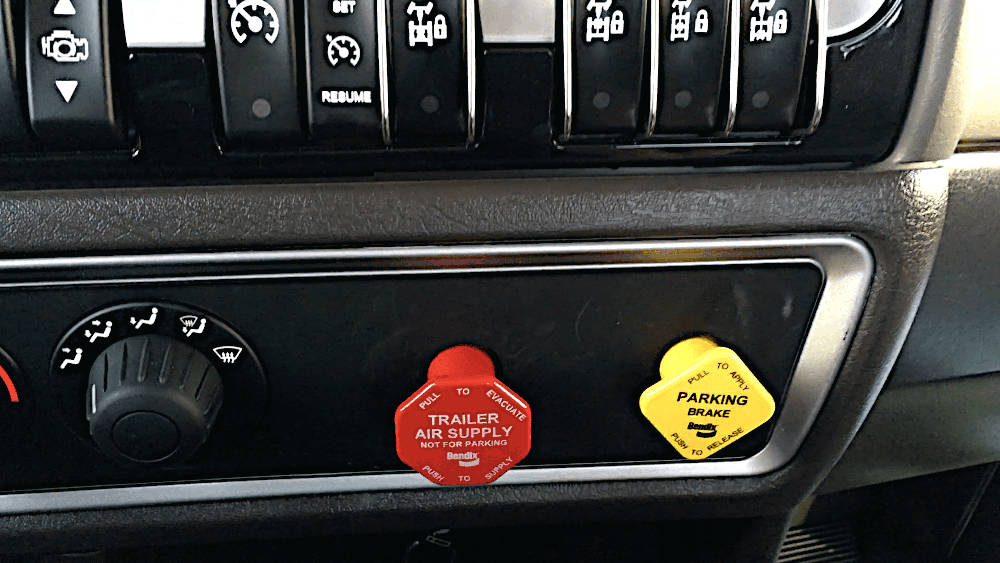
And those are on/off switches, they apply the parking brakes, "on" "off".
Now, the difference between a big truck, a commercial vehicle that is equipped with air brakes, or an RV unit for that fact: Is that the parking brakes are powered by large powerful springs.
These large powerful springs are another power source that apply the parking brakes, and their best used for parking.
Now, what happens is, you're going up and down the road, and lose the service brakes, on an air brake equipped vehicle: The air drains down, the air drains down, because what happens is, when you push the buttons in on the dash to release the parking brakes, air pressure compresses those large powerful springs.
If you lose air pressure in the system, those Springs are no longer able to be caged or compressed, and because you don't have enough air pressure to compress them, they come on.
The challenge with all of these manuals, is that they've referred to these as spring brakes.
And students come into the class, and you try and explain this to them, and they're all thinking: "Are there...is there another brake on the truck, the commercial vehicle, or the vehicle fitted with air brakes?"
No, there isn't.
It's simply one air brake chamber, that converts air pressure into mechanical force, and that applies the service brakes, the foot pedal, and you've got another one on the back of it.
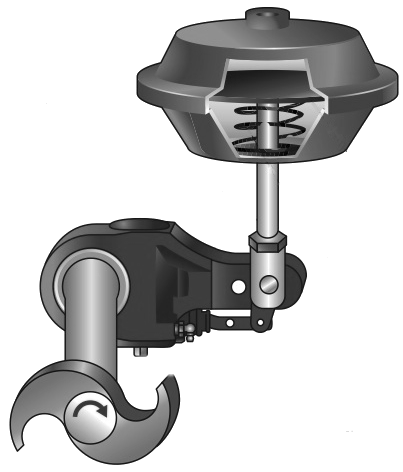
With this large powerful spring in it that's held off in the release piston with air pressure, when you evacuate the air pressure from that spring brake chamber, that large powerful spring comes on, and applies the same brakes.
It's the same as what's on your car or light truck.
You're not using different brakes, you're just using a different power source, which is coming out of you, via a cable back to the brakes and pulling the brakes on.
On a big truck the emergency and parking brakes are powered by these large powerful springs, and held off by air pressure.
Parking Brakes Apply the Brakes Indefinitely
Both systems, a hydraulic system, and an air brake system, have service brakes, the foot pedal when you go up and down the road.
They have parking brakes, that apply the brakes indefinitely.
On your car or light truck, it's just a cable with a ratchet mechanism, like a boat winch, *click* *click* *click* *click* *click*
You click it up, it locks the brakes in to place indefinitely.
Parking/Emergency Brakes Are One And the Same
On a large commercial vehicle, when you evacuate the air from the system, the large powerful springs come on, and apply the brakes, the same brakes that the air brakes work, going up and down the road.
If you lose air pressure in a large commercial vehicle, a large vehicle I'll say, because RVs and buses are also fitted with air brakes, in this day and age, because they're reliable.
If you lose the air pressure, those large powerful springs will come on, and apply the same brakes as all the other brakes.
So all the brakes -- the service brakes, the parking brakes, and the emergency brakes -- all use the same foundation brake system, whether it's a drum brake or a disc brake.

So that is one of the things that I think leads to confusion when students take air brake courses, is that instructors say to them "Oh, there's air brakes and there's spring brakes!".
So students are thinking:
"Well there's two different kinds of brakes on the vehicle?"
And no there's not.
There's one brake, there's two power sources.
As I said, again, just to reiterate, service brakes, the brake pedal.
Parking brakes, and emergency brakes.
Parking brakes and emergency brakes are one in the same thing, they're just used for different purposes, and when they're used for different purposes, they're called different things.
When you park the vehicle, they are called parking brakes.
When you need to bring the vehicle to a stop, because the brakes failed, they're called emergency brakes.
And hopefully that clears up some of the confusion that you might have, taking a CDL air brake course.
And if you've had that confusion, and now you understand "service brakes" "parking brakes" "emergency brakes" aren't the same on hydraulic as on air brakes, leave a comment, down in the comment section there, that'll really help me out in terms of finishing up the air brake manual.
Question for my Smart Drivers:
Have you been confused in an air brake course, by how the "service brakes" "parking brakes" and "emergency brakes" work on an air brake system? Leave a comment, down in the comment section there, all that helps out the new drivers working towards getting their CDL license.
I'm Rick with Smart Drive Test, thanks very much for watching.
If you like what you see here, share, subscribe, leave a comment, down in the comment section.
As well, hit that thumbs up button.
Check out all the videos here on the channel if you're working towards the license, or starting your career as a truck or bus driver, lots of great information here.
As well, head over to our website, awesome information over there, and tremendous online courses that you can purchase.
We're bringing out "Air Brakes Simplified", the manual for CDL drivers in May 2017, so look for that, it's going to be an e-book.
It'll be completely interactive, and it'll have a hundred multiple-choice questions that you will be asked on a CDL license.
Thanks again for watching, good luck on your road test, and remember: Pick the best answer, not necessarily the right answer.
Have a great day, by now.

